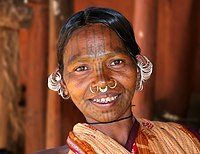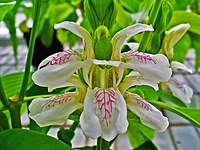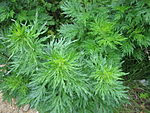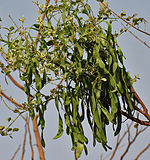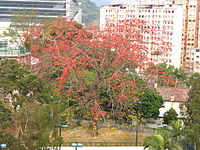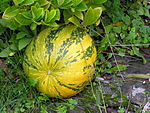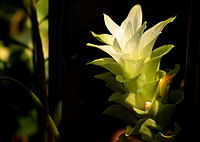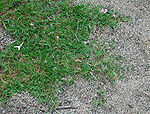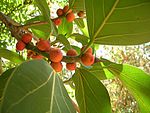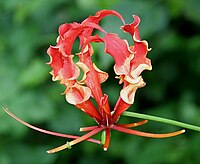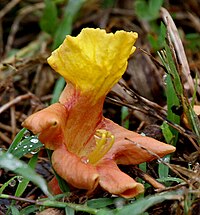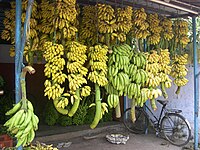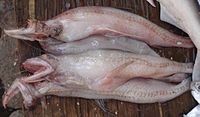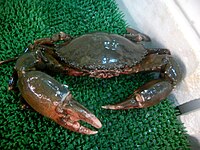Article:Koli community of Maharashtra and biodiversity
Read community contributed articles on biodiversity & environment || Cultural practices & mythological stories related to Indian biodiversity || Checklists of Indian species || Conservation issues library || Official documents related to environment || NGOs, Blogs and Websites || Environment-related video collection || Plants of India || Mammals of India || Facebook || Twitter
Plants and animals important to the Koli-Agri community in Maharashtra
Editor's Note: The remedies listed here are for documentation purposes only. Please consult your physician before using them as treatment. Project Brahma or the author is not responsible for any damages caused.
Introduction
The word Ethnobotany was coined by Harsh Berger (1895) while studying plants used by the aboriginals of Australia. Martin (1995) defined Ethnobiology as follows:
Ethnobiology implies an explanation on local people’s perspectives on cultural & scientific knowledge.
Ethnobiology includes everything from interaction to interrelation of human communities with plants & animals. Ethnobiology is study about the utilization of plants and animals for a wide variety of human needs such as food, medicine, fodder, fibre & goods require for his material culture & amenities. This study offers great scope & opportunities for drug & chemical industry; eg. It is estimated that about 75% of 120 biologically active phytochemicals presently used world wide have been derived through follow up researches to verify the authenticity of data from folk & ethnomedical uses[1]. There is great scope for new drug discoveries based on traditional plant uses.
The indigenous knowledge of traditional communities has always remained an easily accessible treasure as it has been handed down usually orally from one generation to another. They are not confined to rural or remote areas but also practiced in highly educated families living in urban areas. The agenda 21 of The Rio Earth summit (1992) stated that the Indigenous (Ethnic) people & their communities & other local communities, have a vital role in environmental management & sustainable development because of their knowledge & traditional practices. States should recognize & duly support their identity, culture & interests and enable their effective participation in the achievements of sustainable development. WHO in its 29th & 30th assembly (1976-77) gave formal recognition to the traditional medicine & recommended to associate the traditional healers in the national health care program. The herbal medicine of ancient times practiced during the Vedic period (5000-3000 BC) & which was temporarily subdued under the impact of modern medicine has staged a come back & a “Herbal Renaissance” is blooming across the world. WHO has estimated that 80% of the people in the world rely on traditional medicine for primary health care needs.
Due to modernization, the precious traditional knowledge has been eroding & corroding fast. It may totally disappear in recent future. All traditional knowledge in any society is too vast to comprehend; but even then; documenting of ethanobiological knowledge in the form of digitized data base is most essential.
Methodology
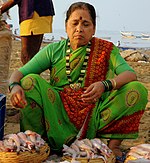
Plants are associated with various festivals, religious ceremonies, rituals, rites etc. throughout the world. Important plants & animals used in religious ceremonies which are of spiritual and medicinal significance have been recorded. Women folk are very particular in observing these festivals, ceremonies & rituals.
The dried specimens collected were photographed & preserved in transparent polythene bags for record. The fresh specimens were preserved by dry method (Herbarium) & also by wet method i.e. preserving in 4-5% formalin solution. The specimens were identified scientifically only after recording the local names of specimens. Source of procurement of the crude medicinal plant parts were recorded. Interviews of the innumerable users of these crude drugs consisted of a questionnaire including their personal faith & belief & also recommendations of other users.
It was observed that one of the main religious ceremonies namely “Pithori Awas” (पिठोरी अमावस्या) which falls on the last day of Shravan month is prayed extremely religiously in all most all Koli & Agri households throughout Navi Mumbai. This day is observed for long lives of the children in the family. Married ladies without issues pray to the goddess on this day. All the plants used for the pooja are mentioned in Ayurveda as plants which increase fertility. I have included all the plants used for this ceremony in the following text.
Locations
I personally visited all the villages/nodes of Navi Mumbai and attended their social & religious functions many times for last 4 years to study their life, believes & social practices.
Many of these people came forward & gave the information, when they realize the importance of this study.
Important plants
Adulsa (Adathoda vasica Nees.)
| Family | Acanthaceae |
|---|---|
| English Name | Vasaka |
| Marathi/Hindi Name | अडुळसा |
| Link on Project Brahma | Justicia adhatoda |
Description: A dense shrubs with many long opposite branches, stem with yellowish bark, glabrous. Leaves elliptic-lanceolate, accuminate, glabrous when mature, entire, petioles long. Flowers in short, dense, axillary pedunculate spikes, calax small, glabrous. Corolla white, with few irregular rose coloured bars in throat. Upper lip ovate-oblong, curved, obtuse, lower lip rounded, with middle lobe broadest. Filaments hairy at base, long, stout, curved. Ovary pubescent. Fruit capsule. Seeds oblong, glabrous.
Uses: Used extensively in all houses for curing cough & cold. Medicinally it contains alkaloids - adathidine, vasicine and vascinone. Its activity is Antiasthamatic, Bronchodilator, Expectorant and Antispasmodic.
Mugwort (Artemisia vulgaris Linn)
| Family | Asteraceae |
|---|---|
| English Name | Mugwort |
| Marathi/Hindi Name | ढोरदवना Dhordavana |
| Link on Project Brahma | Artemisia vulgaris |
Description:Erect herb. Leaves pinnatifid, white tomentose, lobes laciniate, incised and serrate, ending in linear segments. Inflorescence consisting of paniculate spikes. Heads ovate, erect in panicles. Involucral bracts tomentose outside and scabrid within.
Uses: It has hydroxylcoumarin namely Herniarin C10H8O3 and sesquiterpene lactone – Artemisinin C15H22O5. It is stomachic, antiseptic and febrifuge. Used in skin disorders, asthma and general debility.
Mountain ebony (Bauhinia racemosa lamk.)
| Family | Leguminoceae |
|---|---|
| English Name | Mountain ebony |
| Marathi/Hindi Name | अपटा apta, सोना sona |
| Link on Project Brahma |
Description: A small tree with dark bark, numerous branches, drooping. Leaves broader than long, divided a little less than ½ way down into two rounded lobes, green and glabrous above, white and more or less tomentose beneath. Flowers terminal or leaf opposed racemose. Buds pointed, bracteate, calyx pubescent, spathaceous, reflexed. Petals lanceolate or oblong, white or pale yellow. Stamens 10, fertile, filaments densely hairy at base. Ovary pubescent, stigma falcate, glabrous, turgid. Seeds 12-20, oblong, compressed, black.
Uses: This plant is used in many other ceremonies and festivals also. The different species of Bauhinia namely Bauhinia purpurea, Bauhinia variegata are used in Ayurveda for the treatment of Goiter. Kanchanaradiguggul is famous Ayurvedic formulation for thyroid gland diseases.
Silk cotton (Bombax ceiba Linn.)
| Family | Bombaceae |
|---|---|
| English Name | Cotton tree, Silk Cotton |
| Marathi/Hindi Name | शाल्मली Shalmali, सेमल Semal |
| Link on Project Brahma |
Description: A tall deciduous tree, with straight trunk and wide-spreading branches. Bark covered by hard sharp conical prickles. Leaves large, entire, glabrous, lanceolate or oval, acute at the base. Flowers numerous, near the end of branches. Calyx thick, silky within, Corolla bright red, tomentose, Petals recurved. Stamens more than 60, arranged in 5 bundles of about 9-12 each and an inner bundle of 15 of which the 5 innermost are longest, filaments flat. Ovary conical, glabrous, style larger than stamens, stigma 5. Fruit capsule lined with white silky hair. Seeds many ovoid, packed in white cotton.
Uses: It is used in diarrhoea, dysentery, menorrhagia and as an aphrodisiac.
Red pumpkin (Cucurbita maxima Duch.)
| Family | Cucurbitaceae |
|---|---|
| English Name | Red Pumkin |
| Marathi/Hindi Name | लाल भोपळा lal bhopala, तांबडा भोपळा tambada bhopala |
| Link on Project Brahma |
Description: Annual prostrate herb, stem long cylindrical, grooved, with about 15cm long hairy petioles. Lamina 6-19 cm long, reniform, with 5 rounded lobes, margins minutely dentate. Tendrils with 2-6 branches. Male flowers-Calyx club or tube shaped, 5-10 mm long, 5 losed, hairy. Corolla 4-7 cm long, campanulate, 5- lobed, reflexed, yellow. Stamens 3, Filaments 5-8mm long. An thers about 15mm long. Female flowers- Peduncle 5-7 cm long, solitary. Fruit large having fibrous pulp.
Uses: The fruit is used in curries. The fruit pulp is used in poulutice on boils, ulcers etc. The water base paste of fruit stalk is used against all kinds of insect bites especially against centipedes.
Wild turmeric (Curcuma aromatica Salisb.)
| Family | Zingiberaceae |
|---|---|
| English Name | Wild Turmeric |
| Marathi/Hindi Name | Jangli haldi जंगली हळी |
| Link on Project Brahma |
Description: Common forest hill slop plant. Bright yellow to mauve purple flowers. Almond shaped tubers present.
Uses: Contain phenolic compound Curcumin in the tuber and leaves. Used to cure gout and various skin diseases.
Grass (Cynodon dactylon)
| Family | Gramineae |
|---|---|
| English Name | Grass |
| Marathi/Hindi Name | दुर्वा Durva |
| Link on Project Brahma |
Description: Annual or perennial herb, leaves alternate, leaf sheath split. Inflorescence spike or pacicle of splikelets. Flowers – grouped in spikelet. Each spikelet is enclosed at base 2 bracks called empty glumes. Perianth 2-3 minute scales, placed within lemma and palea. Androecium – stamens 3-6, anthers versatile. Gynoecium- carpel 1, ovary superior, unilocular, ovules single, erect, anatropous, stigmas 2, lateral and feathery. Fruit – caryopsis.
Uses: It contains glycoside, β- carotene, β sitosterol, triglochinin and minerals. It is a stringent and styptic. Used in treatment of epistaxis. Durvadiquatha is used in treatment of seminal diseases. The fresh juice as well as decoction of roots is diuretic. Cold infusion of grass stops bleeding from piles.
Banyan Tree (Ficus benghalensis Linn.)
| Family | Moraceae |
|---|---|
| English Name | Banyan tree |
| Marathi/Hindi Name | वड Wad |
| Link on Project Brahma |
Description: Very large tree reaching 30m height, sending down many aerial roots from the branches & thus extending the growth of the tree indefinitely. Leaves coriaceous, 10-20 x 5-12cm, ovate to elliptic, obtuse, entire, glabrescent above, glabrescent or minutely pubescent beneath, stipulate, Inflorescence hypanathodium, axillary, red when ripe. Male flowers many, near the mouth, sepals 4, stamen 1. Female flower at base, style short.
Uses: It contains flavonoids & has astringent effect in treatment of diarrhea and polyuria. Milky juice is useful in external application to pain & bruises in rheumatism. Bark infusion is used for diabetes.
Glory Lily (Gloriosa superba L.)
| Family | Liliaceae |
|---|---|
| English Name | Glory Lily |
| Marathi/Hindi Name | कळ लावी Kal-lavi, indai, khadyanag, वाघचबका vaghachabaka |
| Link on Project Brahma |
Description: Perenial herb with bulbous stem or short rhizome, climber. Leaves cauline or radicle, alternate or whorled. Inflorescence-racemose, terminal. Flowers bisexual, regular, hypogynous, bracteate, spath present. Perianth : 6 in 2 whorls, Petaloid. Androcium- Carpels-3, united, Ovary superior, trilocular, axile placentation. Fruit- capsule.
Uses: Bulb is consumed which has alkaloid Superbine in it. It helps in cardiac disease and also used to treat amenorrhoea.
Kashmir Teak (Gmelina arborea Roxb.)
| Family | Verbenaceae |
|---|---|
| English Name | |
| Marathi/Hindi Name | शिवण Sivan |
| Link on Project Brahma |
Description: A moderate sized, deciduous tree. Bark grayish yellow, corky. Leaves ovate, acuminate, entire, glabrous, above when mature. Petioles cylindric, puberulous, glandular at top. Flowers in small cyme, bracteate. Calyx campanulate, hairy, small, triangular, acute. Corolla hairy outside, lobed 2-lipped. Upper lip long, deeply divided into 2 oblong, obtuse lobes. Lower lip 3 lobed. Fruit Drupe, oval or pyriform. Smooth, orange yellow when ripe.
Uses: It contains oil, alkaloid and lignans-arboreol and gmelinol in it. It has anti-inflammatory action. Used in treatment of arthritis and rheumatism. The root taken with liquorice, honey and sugar increases milk secretion.
Drumsticks (Moringa pterygosperma Gaerth.)
| Family | Moringaceae |
|---|---|
| English Name | Drumstick |
| Marathi/Hindi Name | |
| Link on Project Brahma |
Description: A small or middle sized tree. Bark corky, wood soft. Root pungent. Young parts tomentose, Leaves 3- pinnate, opposite, decidrious, gland at articulation puberulous panicles. Calyx lobes linear, lanceolate, reflxed, petals spathulate, veined, stamens 5, fertile, alternating with 5-7 antherless stamens, filaments villous. Ovary oblong; style cylinderic. Fruit-legume or pod, reaching 45cm long, 9-ribbed. Seeds 3 angled, winged.
Uses: It has essential oil, resin & mucilage along with alkaloids Moringinine and Moringine (C7H8N2). It’s activity is Antispasmodic, Expectorant and Diuretic. Used in the treatment of gout. Moringinine is cardiac stimulant.
Banana (Musa paradisiaca L.)
| Family | Musaceae |
|---|---|
| English Name | Banana |
| Marathi/Hindi Name | |
| Link on Project Brahma |
Description: Large herb; stem unbranched, covered with leaf sheath forming aerial stem; stem modified into an underground rhizome; Leaves large, spirally arranged, entire, mid-rib strong with numerous parallel veins. Inflorescence spike with coloured spathe; Flowers bisexual; Perianth 6 in tow series tepals unequal, free. Tamens 6, five fertile and 1 sterile . Gynoecium syncarpous, tricarpellary, inferior; axile placentalion, style filiform, stigma trilobed, fruit 3 celled capsule. Plantains are classified formally as Musa acuminata, Musa balbisiana or hybrids Musa acuminata × balbisiana, depending on their genomic constitution. The old scientific name Musa paradisiaca is no longer used. Most plantains come from the hybrid AAB and ABB Cultivar Groups.
Uses: Fruit is a good source of starch, Potassium , Magnesium, Phosphorous & vitamin A. Raw banana used in dysentry & diarrhoea; Leaves are used as plates. Rhizome is Antihelmentic Antiscorbutic, Tonic. Fruits are Astringent, Emollient, Aphrodisiac, Anti diabetic, Antidysentric.
Important animals
Bombay Duck (Harpodon nehereus Ham)
| Family | Scopelidae |
|---|---|
| English Name | Bombay Duck |
| Marathi/Hindi Name | बोंबील Bombil |
Description: Body elongate, slender, soft and gelatinous in appearance, reported to be phosphorescent in fresh condition, large head, small eyes; cleft of the mouth wide and deep; lower jaw prominent; band of unequal, recurved, depressible teeth in the jaws, specially enlarged and hastate in the lower jaw; dorsal fin situated midway between the snout and root of the caudal; caudal trilobed; scales commence opposite the origin of the dorsal fin; lateral line tubules phosphorescent; colour brownish to greyish white.
Uses: Bombay duck is used to cure the sty on an eye. The raw fish is touched to an eye at sty. Phosphorescent skin may be of medicinal value. Proper scientific studies have to do conducted .
Eel (Muraenesox cinereus)
| Family | Muraenesocidae |
|---|---|
| English Name | Eel |
| Marathi/Hindi Name | वाम Wam |
Description: Body elongate, anteriorly sub-cylindrical and postero-laterally compressed; anal opening in anterior of the total length; eyes large; posterior nostril larger; cleft of mouth extending far behind eyes, upper jaw longer, separated from rest of snout by a notch, jaws long and slender armed with numerous powerful canines, teeth deciduous, externally directed in mandibles; median fins long, continuous with caudal and commencing immediately behind anal opening, ventrals absent, pectocals well developed. Colour golden yellow dorsally, whitish ventrally, vertical fins yellowish with narrow black outer border.
Uses: Used for convalescing patients, lactating mothers because they are rich source of protein (17%) and are easy to digest.
Crab (Scylla serrata Forskal)
| Family | Portumidae |
|---|---|
| English Name | Crab |
| Marathi/Hindi Name | खेकडा Khekda |
Description: Habitat near shore and brackish water; Cephalothorax is much enlarged and covered by hard chitinous partly calcified carapace. Presence of nine sharp acuminate teeth of equal size on each side of the antero-lateral borders. The chelipeds are very large with powerful chelae; the second to the fourth pairs of legs are normal and the fifth pair of legs is paddle-like and adapted for swimming. The gills are in several series in the bronchial chamber overed by the carapace. The abdomen is much abbreviated. Well marked sexual dimorphism. In male two pairs of uniramous appendages while in female 4 pairs of biramous appendages.
Uses: Crab curry is offered to the goddess “Gauri”. It is supposed to be medically important as it produces heat in the body so it is given to post natal ladies.
Discussion
Ethonobiology an inter-disciplinary science, is both a fascinating and rewarding study. It is a challenging job as it requires good knowledge of tribal people, their traditions along with good communication skills. It also requires thorough knowledge of plant & animal classification, so as to identify & catalogue them. Ethno-Medico-Studies require good command on biochemistry as well. Here in my studies I have taken sincere efforts to give proper justice to all.
I have identified and documented only twelve plant specimens and three marine animal specimens used by Koli-Agri tribal society for their festivals & their day to day life. Many more can be added to this list after future studies.
Now a days all useful plant sources are becoming scarce due to many developmental projects & indiscriminate cutting of forests. The tribal communities have vast knowledge of nature & its effect on them. This information has to be documented very soon in scientific manner.
References
- ^ In vitro Antimicrobial Screening of the Fruit Extracts of Two Syzygium Species (Myrtaceae) Advances in Biological Research. Accessed: Sep 18, 2011
Semantic tags
- Browse all Semantic Tags associated with this page
- Find more pages and articles created by the community by clicking this link.
| Title | Plants and animals important to the Koli-Agri community in Maharashtra | Article is on this general topic | Indigenous practices | Author | Daya Tilwe |
|---|---|---|---|---|---|
| Specific location(s) where study was conducted | Navi Mumbai | General region where study was conducted | Mumbai | State where study was conducted | Maharashtra |
| Institutional affiliation | ICLES College | Institution located at | Navi Mumbai | Institution based around | Mumbai |
| Species Group | Not noted | User ID | User:Not noted | Page creation date | 2011/10/06 |
Share this page:
